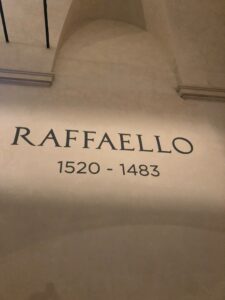
On the night of April 6th, 1520, Raphael suddenly died…
all of Rome, disconcerted and incredulous, congregated around his deathbed…
His premature passing, made Raphael the “divine” paragon of artistic creativity, snatched from the world in his prime.
The pontiff himself, Leo X, was fraught with pain…
The great Raffaello by whom nature herself feared to be vanquished while he lived and, when he died, feared that she might perish with him

Hello, everyone! Quotes all come from the informational panels of this wonderful exhibition.
“Raphael 1520–1483” open until August 30, 2020, at the Scuderie del Quirinale in Rome.
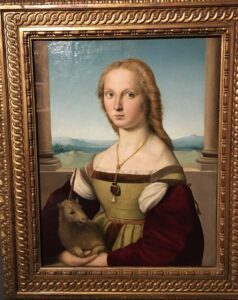
As you can see, this is not a matter of a mere artist, even a mere master.
Here we are in another realm, on another level, in the category of the Sublime, Legend.

Looking at Raphael’s works is not just looking at any painting, however beautiful, and considering its technique, colors, or style, as is the case with many artists.
What we feel with him is like feeling we have looking at all all that is familiar, natural, intimate.
It’s the feeling you might have when you see one of your aunts, when you look at the blue sky of Rome, or when you eat bread.
It is just what it is and that’s it.

The exhibition has two distinguishing features. The first is that it can only be seen in small groups with an employee of the museum, who every five minutes, at the sound of a sort of bell, gently but firmly asks the group to move on to the next room.

As you can’t visit it freely, you can’t move from one room to the other, maybe going back to look at a painting, a detail.
In fact, the fear that the signal is coming to invite you to move on might make you feel a bit anxious while looking at the art works.

The second trait of the exhibition is that it goes in reverse order, starting from Raphael’s death and his final works and moving back to his early years as an artist.

This is why the title of the exhibition is Raphael 1520–1483 with the dates in reverse order. But why? What’s the point?
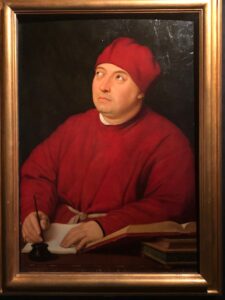
I think that I read all the exhibition panels and I have to say I never found the answer.
They say something about “a compelling journey back through time,” but the reason remains obscure.
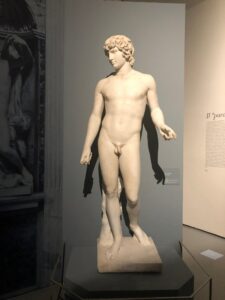
Talking about Raphael’s art works, for the reasons mentioned above, strikes me as tiresome. I would rather stop to discuss a question that has been oft discussed of late: his famous letter to Pope Leo X de’ Medici.

We know that Raphael was appointed the architect in charge of reconstructing St. Peter’s 1514. And he was given the “most ambitious archaeological endeavor ever attempted in the reconstruction of the Map of Ancient Rome” as one panel reads.
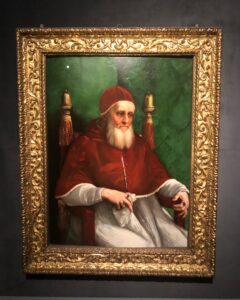
In this letter, which he wrote jointly with Baldassarre Castiglione, Raphael expressed his sorrow at seeing Rome, Caput Mundi, reduced virtually to a pile of ruins.
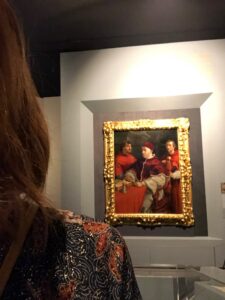
The reason for this destruction was the reuse of the marble from its extraordinary monuments, which in the dark years had become full-fledged quarries to take material from with no hesitation.
This erased, swallowed up and leaving almost nothing of dozens and dozens of enormous and magnificent holy edifices, spas, monuments, and so forth.
It was a terrible loss.
That’s it for now. Come and enjoy the wonderful art of Raphael Sanzio.
Raphael 1520–1483
Scuderie del Quirinale in Rome
until August 30, 2020
